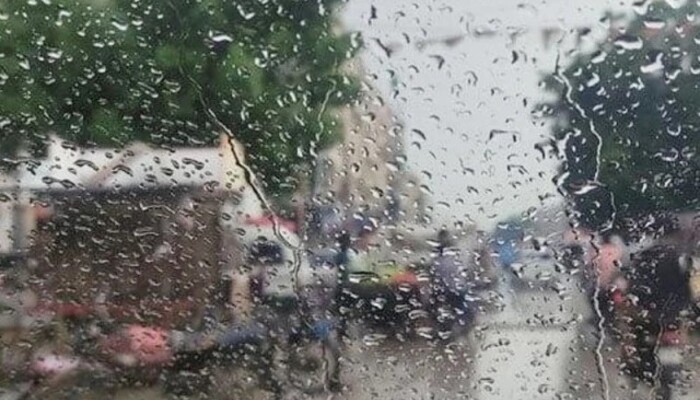
HYDERABAD – A fierce 90-minute monsoon downpour late Monday turned Hyderabad into a flooded disaster zone, fully exposing the district administration’s hollow claims of monsoon preparedness. Accompanied by a 42-nautical-mile-per-hour dust storm, the rain wreaked havoc across Hyderabad, Latifabad, and Qasimabad, flooding major roads, crippling electricity infrastructure, and bringing life to a standstill.
The local Met office recorded 94mm rainfall in Hyderabad and 56mm in Latifabad — but the impact was equally severe in both areas. The rain started at 4:20pm and continued until 6pm, submerging roads and streets while triggering a city-wide power breakdown that halted all pumping operations of the Hyderabad Water and Sewerage Corporation (HW&SC).
Commuters were stranded for hours as streets resembled rivers. Knee-deep water was reported from Liaquat Colony, Station Road, Phulelli, Cloth Market, Sakhi Pir, Gari Khata, and nearly all units of Latifabad. Social media buzzed with frustrated citizens comparing Hyderabad to a flooded Venice.
Netanyahu’s Coalition Wobbles as Ultra-Orthodox Party Quits Over Draft Bill
Hesco’s Power Collapse Worsens Crisis
Hyderabad Electric Supply Company (Hesco) became a lightning rod for public anger after its infrastructure collapsed under the storm. Out of 152 power feeders, 140 tripped, plunging the city into darkness. Only 54 had been re-energized by late evening.
Four major 132kV grid stations were also hit after towers collapsed during the storm. A massive tree fell on Fatima Jinnah Road, bringing down transmission lines and further delaying restoration. Hesco’s spokesman said line staff were working overnight to restore the remaining feeders.
Due to the power failure, major pumping stations — including Tulsi Das and Poly — stopped working. Although backup generators were operational, fuel supply issues hampered drainage efforts. The result: hours of flooding and near-zero mobility.
Mayor Kashif Shoro blamed the delay in water drainage entirely on Hesco. “Only 30% of the sewerage facilities are currently functional,” he said, adding that recurring faults were causing repeated shutdowns. He hoped the situation would normalize overnight but admitted drainage remained a major challenge.
CM Murad Ali Shah Steps In, Urges Emergency Response
Sindh Chief Minister Syed Murad Ali Shah monitored the worsening situation remotely and directed local authorities to accelerate water drainage. In a press statement, the CM ordered Energy Minister Nasir Shah to coordinate with Hesco and prioritize restoring electricity to pumping stations.
Murad Ali Shah emphasized immediate road clearance and urged all civic bodies — including the Sindh Solid Waste Management Board, district administration, traffic police, and rescue services — to coordinate response efforts. Precautionary instructions were also issued: control rooms must stay active 24/7, dewatering teams should remain on standby, and public updates must be shared consistently via media.
He also appealed to the public to avoid unnecessary travel and cooperate with authorities during cleanup operations.
Follow us on Instagram, YouTube, Facebook,, X and TikTok for latest updates




